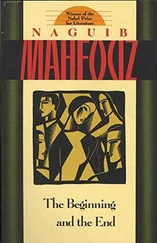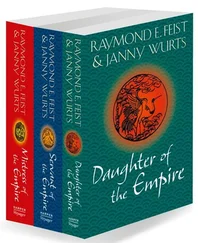Chalmers Johnson - The Sorrows of Empire - Militarism, Secrecy, and the End of the Republic
Здесь есть возможность читать онлайн «Chalmers Johnson - The Sorrows of Empire - Militarism, Secrecy, and the End of the Republic» весь текст электронной книги совершенно бесплатно (целиком полную версию без сокращений). В некоторых случаях можно слушать аудио, скачать через торрент в формате fb2 и присутствует краткое содержание. Год выпуска: 2003, ISBN: 2003, Издательство: Macmillan, Жанр: Старинная литература, на английском языке. Описание произведения, (предисловие) а так же отзывы посетителей доступны на портале библиотеки ЛибКат.
- Название:The Sorrows of Empire: Militarism, Secrecy, and the End of the Republic
- Автор:
- Издательство:Macmillan
- Жанр:
- Год:2003
- ISBN:9780805077971
- Рейтинг книги:4 / 5. Голосов: 1
-
Избранное:Добавить в избранное
- Отзывы:
-
Ваша оценка:
- 80
- 1
- 2
- 3
- 4
- 5
The Sorrows of Empire: Militarism, Secrecy, and the End of the Republic: краткое содержание, описание и аннотация
Предлагаем к чтению аннотацию, описание, краткое содержание или предисловие (зависит от того, что написал сам автор книги «The Sorrows of Empire: Militarism, Secrecy, and the End of the Republic»). Если вы не нашли необходимую информацию о книге — напишите в комментариях, мы постараемся отыскать её.
The Sorrows of Empire: Militarism, Secrecy, and the End of the Republic — читать онлайн бесплатно полную книгу (весь текст) целиком
Ниже представлен текст книги, разбитый по страницам. Система сохранения места последней прочитанной страницы, позволяет с удобством читать онлайн бесплатно книгу «The Sorrows of Empire: Militarism, Secrecy, and the End of the Republic», без необходимости каждый раз заново искать на чём Вы остановились. Поставьте закладку, и сможете в любой момент перейти на страницу, на которой закончили чтение.
Интервал:
Закладка:
In the mid-1990s, Unocal put together the Central Asia Gas and Pipeline Consortium (CentGas), made up of the government of Turkmenistan, the Delta Oil Company of Saudi Arabia, Indonesia Petroleum, Itochu Oil Exploration Company of Japan, Hyundai Engineering and Construction Company of South Korea, the Crescent Group of Pakistan, and Gazprom, the Russian natural gas behemoth. Delta was included because it was close to King Fahd of Saudi Arabia, and Unocal’s advisers thought that he might help legitimize Unocal with the Taliban. (The only countries ever to recognize the Taliban government were Saudi Arabia, Pakistan, and the United Arab Emirates.) Gazprom was brought in to neutralize any Russian opposition. Unocal held 46.5 percent of the shares, Delta 15 percent, and the government of Turkmenistan 7 percent. According to the preeminent authority on the politics of Central Asia, the Pakistani journalist Ahmed Rashid, by 1996, “strategy over pipelines had become the driving force behind Washington’s interest in the Taliban.” 40
Unocal’s scheme looked good on paper, but it didn’t fly. The Taliban was split between pro-Bridas and pro-Unocal factions, and it kept asking the CentGas consortium for more money and investments in roads and other infrastructure projects. Rumors suggest that Osama bin Laden favored working with Bridas rather than Unocal, in part because he did not like seeing his militant colleagues collaborating with Americans. The company was also encountering resistance from a quarter it normally did not deign to notice. Unocal’s indifference to the Taliban’s human rights record deeply offended the American women’s movement. An organization called the Feminist Majority Foundation of Los Angeles petitioned the state of California to revoke Unocal’s charter, and in June 1998, Mavis Leno, wife of Jay Leno, the host of TV’s The Tonight Show, attended a Unocal stockholders’ meeting and denounced the company for its willingness to cooperate with the Taliban. 41Then, on August 7, 1998, Osama bin Laden’s terrorists attacked the American embassies in East Africa, and on August 20, President Clinton retaliated by ordering Tomahawk cruise missiles fired into bin Laden’s training camps in Afghanistan. The next day Unocal suspended work on the pipeline until the United States recognized the government of Afghanistan, and on December 4, it formally withdrew from the CentGas consortium, claiming that world oil and gas prices were too low to make it profitable. Most analysts concluded that no other major oil company would take its place and that the project was dead.
But the U.S. government was not ready to give up. Its purpose was not just to make money but to establish an American presence in Central Asia. It was pleased with the Taliban’s crackdown on Afghan poppy production and wanted the Taliban to turn over Osama bin Laden. The Taliban was also winning the war against the Northern Alliance and consolidating its rule throughout the country. It was, however, getting deservedly awful press. In November 1999, the United Nations imposed sanctions against Afghanistan because of its human rights abuses, and on March 1, 2001, the Taliban provoked international outrage by blowing up two monumental ancient Buddhist statues at Bamiyan. The United States lost patience and concluded that “regime change” was in order.
As Alexander’s Gas & Oil Connections reported in February 2002, “Plans to destroy the Taliban had been the subject of international diplomatic and not-so-diplomatic discussions for months before September 11. There was a crucial meeting in Geneva in May 2001 between U.S. State Department, Iranian, German, and Italian officials, where the main topic was a strategy to topple the Taliban and replace the theocracy with a ‘broad-based government.’ The topic was raised again in full force at the Group of Eight (G-8) summit in Genoa, Italy, in July 2001 when India—an observer at the summit—contributed its own plans.” 42Further meetings took place after the G-8 session in Berlin among American, Russian, German, and Pakistani officials, and Pakistani insiders have described a detailed American plan of July 2001 to launch military strikes against the Taliban from bases in Uzbekistan and Tajikistan before mid-October of that year. It should be recalled that “Bush’s favorite Afghan,” Zalmay Khalilzad, joined the National Security Council on May 23, 2001, just in time to work on an operational order for an attack on Afghanistan. On August 2, 2001, Assistant Secretary of State for South Asian Affairs Christina Rocca, a former CIA officer, held the United States’s last official meeting with the Taliban in Islamabad.
In light of this trajectory, it would appear that the attacks of September 11 provided an opportunity for the United States to act unilaterally to remove the Taliban, without assistance from Russia, India, or any other country. In the weeks following 9/11, the Pentagon’s formidable public relations apparatus went into top gear to describe to a public almost totally ignorant of Afghanistan and of Central Asian oil politics generally how we proposed to smash Osama bin Laden and his al-Qaeda organization. The secretary of defense, Donald Rumsfeld, became something of a stand-up comic in his daily press conferences, quipping about how the United States wanted bin Laden dead or alive and was “smoking out” al-Qaeda operatives, who were said to be “on the run.” The primary strategy, however, was to reopen the Afghan civil war by having the CIA spread some $70 million in cash among the Tajik and Uzbek warlords that the Taliban had defeated. 43The reemergence of the Northern Alliance, backed by massive American air power, resulted in the almost instantaneous collapse of the Taliban regime, leaving Afghanistan to revert to fighting among local satraps and the cultivation of opium poppies.
With astonishing speed and efficiency, the U.S. military managed to use the war to obtain the rights to military bases in Afghanistan and surrounding countries. For its immediate military operations, which were largely over by the beginning of 2002, it occupied three main sites within Afghanistan itself—Mazar-i-Sharif airport in the extreme north of the country, Bagram Air Base in the suburbs of Kabul, and Kandahar International Airport in the south. It also placed troops in Kabul to provide immediate security for Hamid Karzai’s newly installed government, whose powers hardly extended beyond Kabul, much less the rest of the country. For the first few weeks, all of these places were occupied by Special Forces, marines, and frontline army troops, but as the Taliban collapsed and al-Qaeda dispersed into the countryside and across the Pakistan border, these combat forces were replaced with army units engaged in establishing semipermanent garrisons. In August 2002, Central Command chief General Tommy Franks commented that U.S. soldiers would be in Afghanistan for “a long, long time” and compared the situation to South Korea, where army and air force troops had been based for more than half a century. 44
In addition to occupying strategic points in Afghanistan, the Bush administration entered into an agreement with General Pervez Musharraf, the president of Pakistan, to take over three important bases of the Pakistan Air Force: Jacobabad, 300 miles northeast of Karachi; Pasni, 180 miles west of Karachi on the Arabian Sea coast; and Dalbandin, 170 miles southwest of Quetta and only 20 miles from the Afghan border. It was from these Pakistani bases that the United States sent its CIA operatives and Special Forces into Afghanistan and launched its AC-130 gunships and Predator drones. All told, the United States flew as many as 57,800 sorties against Afghan targets from bases in Pakistan or crossing its airspace. At Jacobabad, the United States quickly undertook a major program to improve the runways, install air-traffic-control radar, and air-condition offices and living quarters. Dalbandin airstrip had been built in the late 1980s with Saudi Arabian money to allow Saudi and Persian Gulf princes to fly in for falconing and bird-hunting expeditions. The CIA found its location near the Afghan border very convenient. In January 2002, however, with the threat of another war with India looming, Pakistan moved its forces south from that border and reoccupied Jacobabad and Pasni. Though displeased, the Americans had little choice but to share the facilities. 45
Читать дальшеИнтервал:
Закладка:
Похожие книги на «The Sorrows of Empire: Militarism, Secrecy, and the End of the Republic»
Представляем Вашему вниманию похожие книги на «The Sorrows of Empire: Militarism, Secrecy, and the End of the Republic» списком для выбора. Мы отобрали схожую по названию и смыслу литературу в надежде предоставить читателям больше вариантов отыскать новые, интересные, ещё непрочитанные произведения.
Обсуждение, отзывы о книге «The Sorrows of Empire: Militarism, Secrecy, and the End of the Republic» и просто собственные мнения читателей. Оставьте ваши комментарии, напишите, что Вы думаете о произведении, его смысле или главных героях. Укажите что конкретно понравилось, а что нет, и почему Вы так считаете.











